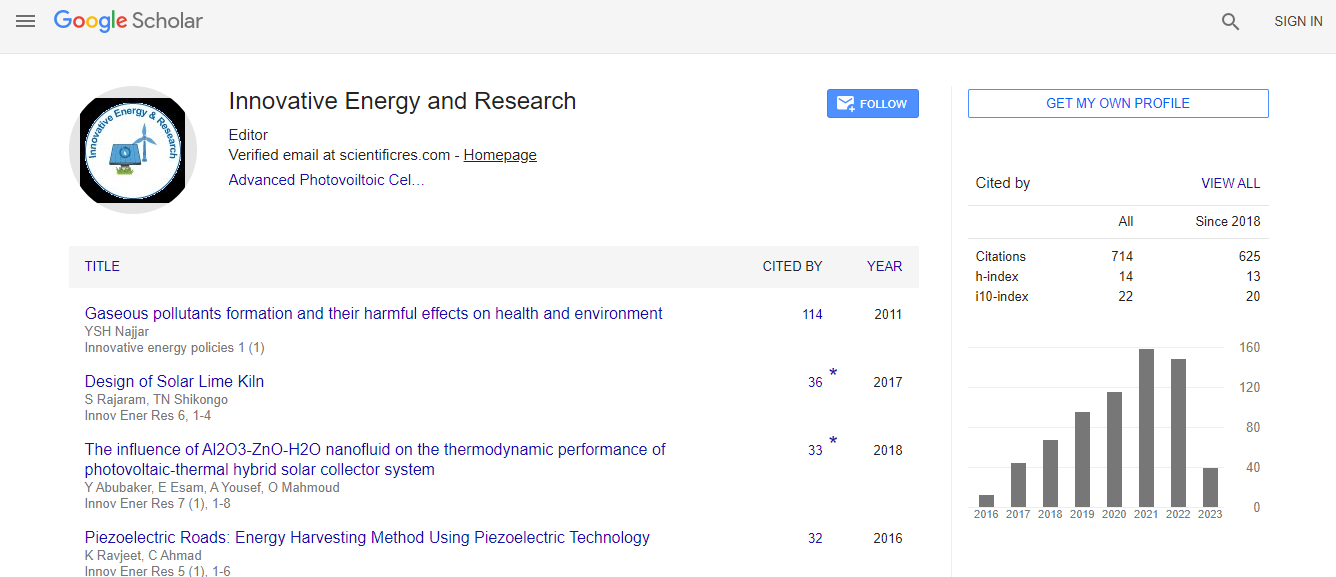Our Group organises 3000+ Global Events every year across USA, Europe & Asia with support from 1000 more scientific Societies and Publishes 700+ ������ Journals which contains over 50000 eminent personalities, reputed scientists as editorial board members.
������ Journals gaining more Readers and Citations
700 Journals and 15,000,000 Readers Each Journal is getting 25,000+ Readers
Citations : 712
Indexed In
- Google Scholar
- Open J Gate
- Genamics JournalSeek
- RefSeek
- Hamdard University
- EBSCO A-Z
- Publons
- Euro Pub
- ICMJE
Useful Links
Recommended Journals
Related Subjects
Share This Page
An energy-efficient single-pane green window via the photothermal effect of chlorophyll thin film coatings
20th International Conference on Advanced Energy Materials and Research
Donglu Shi and Yuan Zhao
University of Cincinnati, USA
Posters & Accepted Abstracts: Innov Ener Res
DOI:
Abstract
To prevent heat loss through windows in cold climates, the conventional methods mainly rely on low-e coatings and thermal insulating materials on double-pane windows. In this study, naturally occurring chlorophyll is utilized as a thin film coating on glass (also known as “Green Window” for its natural and green appearance) and demonstrates applicability to significantly reduce thermal loss, thus improving energy savings. Chlorophyll exhibits a unique optical characteristic with strong absorptions in the blue-violet and NIR regions while remaining highly transmissive in much of the visible region. This unique property allows, on one hand, simulated solar energy, in the non-visible region, to be converted to heat by chlorophyll through the so-called photothermal effect. Only slight heating due to the photothermal effect on the window surface is required to significantly reduce the U-factor (related to thermal loss). On the other hand, the chlorophyll coating density required to generate this temperature rise by thin film deposition on glass retains high light transmittance attributable to minimum absorption in the visible range. This concept lifts the dependence on insulating materials making single-pane windows highly possible. Chlorophyll synthesis, thin film deposition, optical characterization, photothermal effect, and energy performance quantification are carried out in this study with engineering considerations in window designs.Biography
E-mail: donglu.shi@uc.edu

